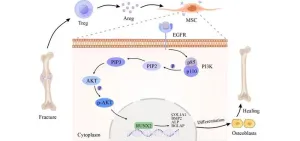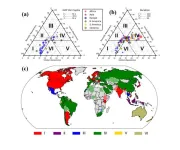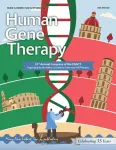(Press-News.org) London, United Kingdom – 30 August 2024: The ESC Clinical Consensus Statement on Obesity and Cardiovascular Disease, presented at this year’s ESC Congress (London, UK, 30 August to 2 September) summarises current evidence on the epidemiology and aetiology of obesity; the interplay between obesity, cardiovascular risk factors and cardiac conditions; the clinical management of patients with cardiac disease and obesity; and weight loss strategies including lifestyle changes, interventional procedures, and anti-obesity medications with particular focus on their impact on cardiometabolic risk and cardiac outcomes.
The Consensus Statement will be co-published in the European Heart Journal (EHJ) and the European Journal of Preventive Cardiology (EJPC) at 08:15 BST on Friday 30 August 2024.
The global prevalence of obesity has more than doubled over the past four decades, currently
affecting more than a billion individuals. Beyond its recognition as a high-risk condition that is
causally linked to many chronic illnesses, obesity has been declared a disease in itself, that results in impaired quality of life and reduced life expectancy.
“Notably, 67.5% of deaths related to high body mass index (BMI) are attributable to cardiovascular disease (CVD). Despite the increasingly appreciated link between obesity and a broad range of CVD manifestations including atherosclerotic disease, heart failure, thromboembolic disease, arrhythmias and sudden cardiac death, obesity has been under-recognised and sub-optimally addressed compared with other modifiable cardiovascular risk factors,” says Professor Emeline Van Craenenbroeck, Consensus Statement Co-Chair, Antwerp University Hospital, Belgium.
“This Consensus Statement aims to raise awareness on obesity as a major risk factor and provide guidance for implementing evidence-based practices for its prevention and optimal management within the context of primary and secondary CVD prevention,” adds Professor Eva Prescott, corresponding author, Bispebjerg Frederiksberg Hospital, University of Copenhagen, Denmark.
While obesity adversely affects different organs and is a risk factor for several chronic diseases, the Consensus Statement highlights how obesity not only contributes to well-established cardiovascular (CV) risk factors (type 2 diabetes [T2DM], dyslipidaemia, elevated blood pressure and arterial hypertension) but also has direct adverse effects on cardiac structure and function and leads to the development of CVD – both atherosclerotic and non-atherosclerotic – independently of other CV risk factors.
The Consensus Statement highlights that both genetic and biological factors influence individual development of obesity, but the worldwide obesity epidemic is largely driven by environmental/societal factors. It also notes that individuals with similar BMI may have different cardiometabolic risk. Other metrics of abdominal adiposity including waist circumference, waist-to-height ratio and waist-to-hip ratio are useful to refine cardiometabolic risk stratification beyond BMI.
Obesity and T2DM are strongly inter-related. About 80-85% of people with T2DM are overweight or obese. Conversely, individuals with obesity are nearly three times more likely to develop T2DM than normal weight individuals (20% vs. 7.3%, respectively). In patients with established T2DM, weight loss interventions have shown positive effects on glycaemic control including remission to a non-diabetic state. Regarding hypertension, high BMI is thought to be responsible for 78% of the risk of hypertension in men and 65% of the risk in women aged 20-49 years.
The relationship between obesity and various types of CVD, including atrial fibrillation, atherosclerotic CVD (ASCVD), heart failure, arrythmias, venous thromboembolism, and valvular disease, is discussed in the Consensus Statement.
Obesity is both preventable and treatable. Comprehensive obesity treatment is based on
multidisciplinary approaches including behavioural interventions, nutrition, physical activity,
pharmacological therapy, and endoscopic procedures/bariatric surgery as appropriate.
“Despite the broad range of available treatment options, obesity management has received considerably less attention compared with other modifiable CV risk factors over the past decades, particularly among cardiologists. Newer anti-obesity medications have recently emerged as additional options for marked weight loss with proven effect on CV outcomes, fuelling interest in obesity as a therapeutic target,” says Professor Konstantinos Koskinas, Consensus Statement Co-Chair, Bern University, Switzerland.
A significant part of the Consensus Statement is dedicated to both non-pharmacological and pharmacological treatment of obesity. Among the key points on dietary interventions are that they generally aim for a 500–750 kcal/day energy deficit, however adjustments to individual body weight and activity are needed. And while a weight reduction in the range of 5–10% can be achieved with various nutritional and multidisciplinary approaches, maintenance of effects is a key issue. Physical activity interventions typically have modest effects on weight loss but are important for weight loss maintenance and reduction of overall CV risk.
On drugs to treat obesity, the statement highlights that orlistat and bupropion/naltrexone should be used with caution as weight loss medications, particularly in patients with known CVD, in view of their modest effects on body weight, scarce evidence on CV safety, and concerns regarding potential long-term CV risk. However, it does highlight that glucagon-like peptide-1 (GLP-1) agonists are effective for weight loss and improvement in CV risk factors.
“GLP1-RA are effective for weight loss and improvement in CV risk factors; currently the only drug regimen with proven outcomes effect in patients with established CVD without T2DM is semaglutide 2.4 mg/weekly,” says Professor Van Craenenbroeck. “Treatment effects are limited to the duration of treatment. The long-term effects and maintenance of efficacy of weight loss medications requires further investigation.”
The authors conclude: “The global problem of obesity is unlikely to be resolved by medical, lifestyle or other interventions directed towards individuals alone. The epidemic of overweight and obesity, affecting now more than 60% of the population in Europe, results from societal and lifestyle changes and can be amended through effective public health policies. The passivity of governments while the obesity epidemic has evolved over decades, is noticeable. We live in an obesogenic environment in which circumstances, beyond the individual control, drive the obesity crisis.
“Individual treatment of obesity in patients with CVD may be cost-effective in some but currently remains out of reach for the majority of patients due to the costs to the individual as well as societal costs.
“Practicing physicians including cardiologists can contribute to the battle against obesity in multiple ways and at different levels, by becoming proactive in the prevention and management of obesity, as they have been for decades with other CV risk factors. They should consistently communicate the CV risk associated with obesity and stress the importance of life-long adoption of healthy lifestyles to maintain a healthy body weight throughout life.
“For patients presenting with obesity, cardiologists and related health care professionals should appreciate the paradigm shift towards combination strategies for managing obesity as a chronic disease. It should be appreciated, however, that lifestyle interventions remain first-line treatment for weight reduction, and that the effects of pharmacologic and lifestyle interventions on weight loss and cardiometabolic factors are additive. Therefore, drug treatment – if applicable and locally supported – should be used as a complementary rather than substitutive treatment option; in this case, long-term adherence to a healthy lifestyle remains critical in order to potentiate and maintain the favourable drug effects.”
ENDS
Notes to editors
Disclosures: Please see full Consensus Statement for all disclosures.
References and notes
The “ESC Clinical Consensus Statement on Obesity and Cardiovascular Disease” will be presented Saturday 31 August 2024 in Bishkek room.
Obesity and cardiovascular disease: an ESC clinical consensus statement, European Heart Journal, 2024, https://doi.org/10.1093/eurheartj/ehae508
ESC Press Office
Tel: +33 6 61 40 18 84
Email: press@escardio.org
The hashtag for ESC Congress 2024 is #ESCCongress
Follow us on X @ESCardioNews
Journalists are invited to become accredited and register here.
Check out the ESC Media and Embargo Policy.
About ESC Congress 2024
It is the world’s largest gathering of cardiovascular professionals, disseminating ground-breaking science both onsite in London and online – from 30 August to 2 September. Explore the scientific programme. More information is available from the ESC Press Office at press@escardio.org.
About the European Society of Cardiology
The European Society of Cardiology brings together health care professionals from more than 150 countries, working to advance cardiovascular medicine and help people lead longer, healthier lives.
END
Two thirds of deaths related to high BMI are due to cardiovascular diseases - ESC Clinical Consensus Statement on Obesity and Cardiovascular Disease
2024-08-30
ELSE PRESS RELEASES FROM THIS DATE:
Prehospital pulse-dose glucocorticoid in ST-segment elevation myocardial infarction
2024-08-30
About The Study: In patients with ST-segment elevation myocardial infarction, treatment with prehospital pulse-dose glucocorticoid did not reduce final infarct size after 3 months. However, the trial was likely underpowered as the final infarct size was smaller than anticipated. The glucocorticoid group had improved acute parameters compared with placebo.
Corresponding Author: To contact the corresponding author, Jasmine Melissa Madsen, MD, email jasmine.melissa.madsen.01@regionh.dk.
To access the embargoed study: Visit our For The Media website at this link https://media.jamanetwork.com/
(doi:10.1001/jamacardio.2024.2298)
Editor’s ...
Effects of sacubitril/valsartan on all-cause hospitalizations in heart failure
2024-08-30
About The Study: In this post hoc pooled analysis of 13,194 patients with chronic heart failure (HF) in the PARADIGM-HF and PARAGON-HF randomized clinical trials, sacubitril/valsartan significantly reduced hospitalization for any reason, with benefits most apparent in patients with a left ventricular ejection fraction below normal. This reduction appeared to be principally driven by lower rates of cardiac and pulmonary hospitalizations.
Corresponding Author: To contact the corresponding author, Muthiah Vaduganathan, MD, MPH, email mvaduganathan@bwh.harvard.edu.
To ...
Promising antibiotic candidates discovered in microbes deep in the Arctic Sea
2024-08-30
Antibiotics are the linchpin of modern medicine: without them, anyone with open wounds or needing to undergo surgery would be at constant risk of dangerous infections. Yet we continue to face a global antibiotics crisis, as more and more resistant strains of bacteria are evolving, while the rate of discovery of fundamentally new antibiotics has been much slower.
But there is reason for hope: 70% of all currently licensed antibiotics have been derived from actinobacteria in the soil, and most environments on Earth have not yet ...
A distinct “repair” role of regulatory T cells in fracture healing
2024-08-30
The study uncovers a unique reparative function of regulatory T cells (Tregs) in the process of fracture healing, a discovery that adds a new dimension to our understanding of the immune response in tissue regeneration. Tregs, a subset of T cells known for their role in maintaining immune tolerance and preventing autoimmunity, are now shown to play a critical part in the intricate interplay between the immune system and bone repair.
Fracture healing is a complex process that involves a sequence of events, including inflammation, repair, and remodeling. While the initial ...
Dancing galaxies make a monster at the cosmic dawn
2024-08-30
Astronomers have spotted a pair of galaxies in the act of merging 12.8 billion years ago. The characteristics of these galaxies indicate that the merger will form a monster galaxy, one of the brightest types of objects in the Universe. These results are important for understanding the early evolution of galaxies and black holes in the early Universe.
Quasars are bright objects powered by matter falling into a supermassive black hole at the center of a galaxy in the early Universe. The most accepted theory is that when two gas-rich galaxies merge to form a single larger galaxy, the gravitational interaction of the two galaxies causes gas to fall towards the supermassive ...
Drought risk and awareness gaps in global society
2024-08-30
Natural disasters have threatened to human beings and the ecosystem. Among the various natural disasters, drought is one of the most insidious and costliest, adversely affecting the global economy and livelihoods. Unlike sudden disasters such as earthquakes or hurricanes, drought is a slow-onset phenomenon that gradually intensifies. This prolonged nature of drought often results in the shortage of drinking water and the disruption of local economies.
The Slow Onset and Impact of Drought
Drought creeps in gradually, often going unnoticed until it reaches a critical stage. This slow progression makes drought particularly challenging to manage and mitigate. Initially, ...
UAF scientist’s method could give months’ warning of major earthquakes
2024-08-30
The public could have days or months of warning about a major earthquake through identification of prior low-level tectonic unrest over large areas, according to research by a University of Alaska Fairbanks scientist who analyzed two major quakes in Alaska and California.
The work was led by research assistant professor Társilo Girona of the UAF Geophysical Institute.
Girona, a geophysicist and data scientist, studies precursory activity of volcanic eruptions and earthquakes. Geologist Kyriaki Drymoni of the Ludwig-Maximilians-Universität in Munich, Germany, is a co-author.
The ...
Consensus paper: Carcinogenicity of gene therapies
2024-08-30
Researchers from the University of Pennsylvania, Perelman School of Medicine, Gene Therapy Program, and Moderna, have shown that repeated administration of lipid nanoparticle-encapsulated mRNA therapy significantly extended survival and reduced serum leucine levels in a mouse model of maple syrup urine disease (MSUD). Click here to read the article now.
The researchers, led by James Wilson, MD, PhD, from the University of Pennsylvania, Perelman School of Medicine, evaluated a lipid nanoparticle-based treatment approach to address all possible genetic mutations that can cause MSUD.
“Repeated intravenous delivery ...
HeterMM: Applying in-DRAM index to heterogeneous memory-based key-value stores
2024-08-30
Emerging byte-addressable storage technologies, such as NVM, provide a more cost-effective and larger-capacity alternative to DRAM, presenting new opportunities to address the high cost, limited capacity, and volatility of in-memory key-value (KV) stores. Numerous efforts have been dedicated to redesigning conventional structures on NVM. However, they were challenged by the substantial engineering cost and increased complexity to be integrated into existing systems. Thus, a general framework to apply existing indexes to KV stores on NVM becomes more attractive.
To solve the problems, a research team led by Xuan Zhou published their new research on ...
Several advantages when medical abortion is started at home
2024-08-30
Being at home is as safe as at the hospital when a medical abortion after twelve weeks of pregnancy is initiated. These are the findings of a study conducted at the University of Gothenburg. When starting at home, day patient care is usually sufficient, and women are satisfied with the treatment.
In the case of medical abortion up to and including the tenth week of pregnancy, the procedure used is a so-called home abortion. At ten to twelve weeks, day patient care is most commonly used, while s medical abortion after twelve ...






